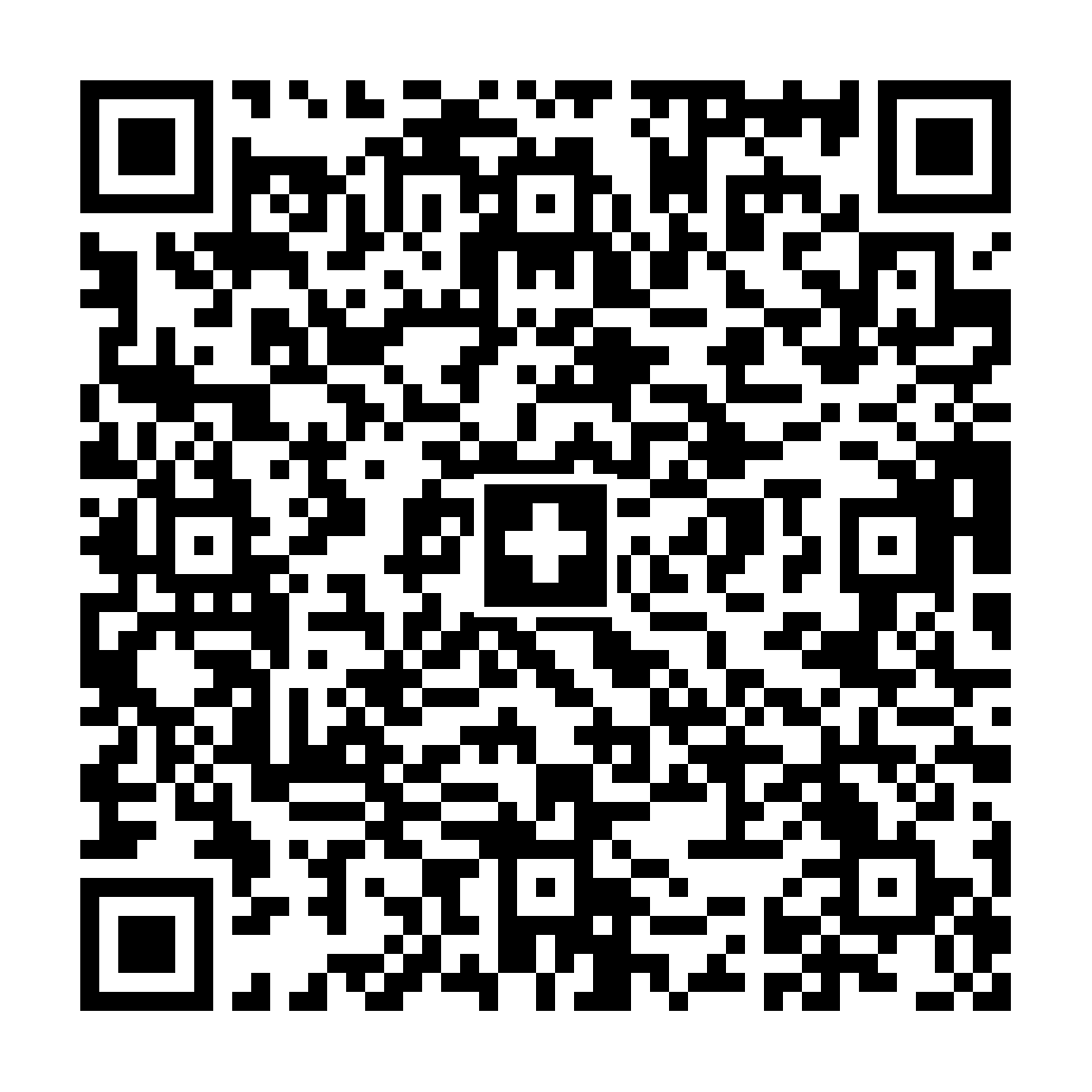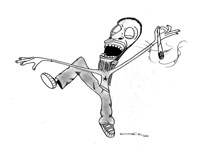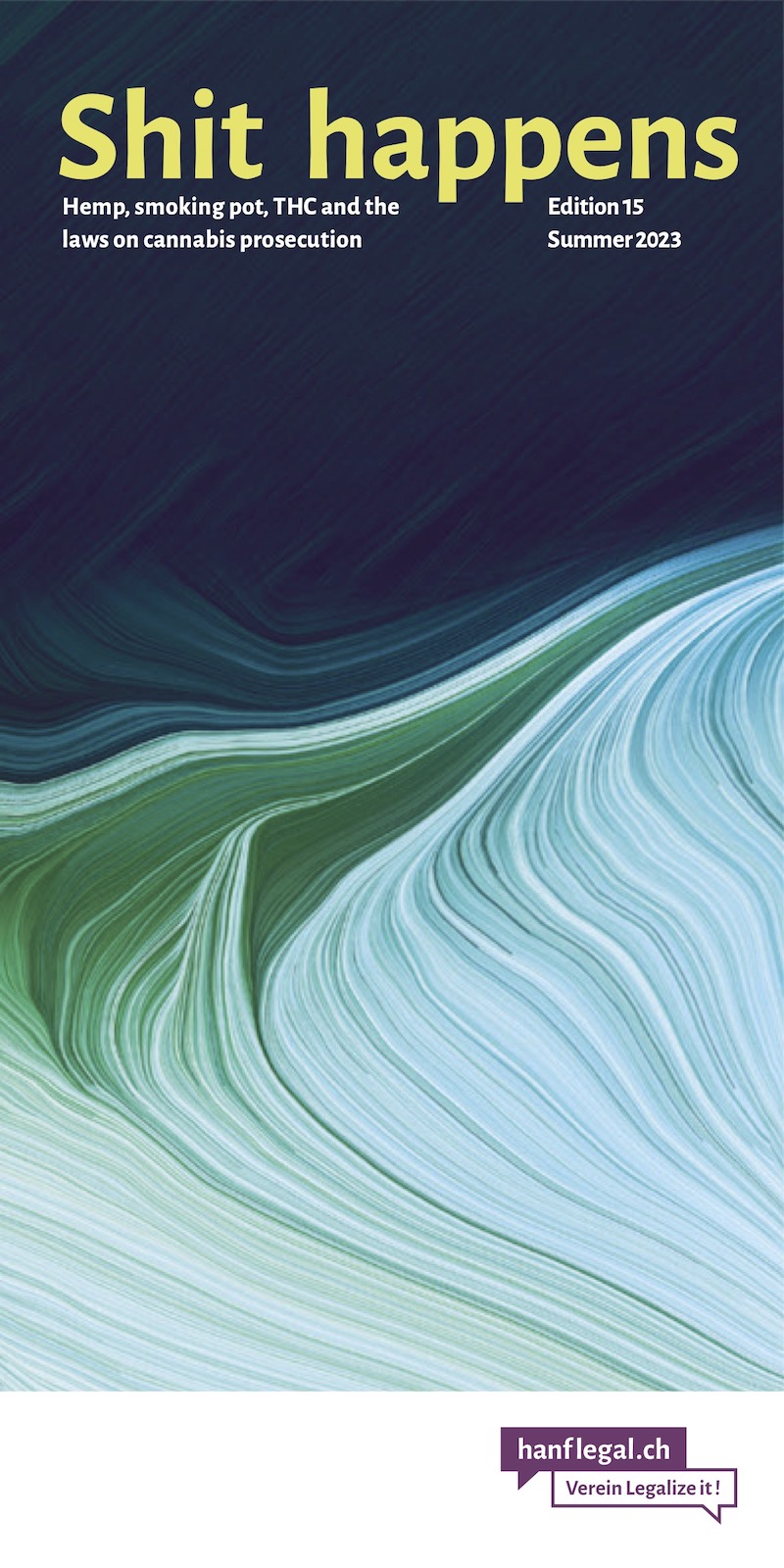- THC & Law:
Cannabis use and psychoses (schizophrenia)
THC is a potent substance: it has an effect on the human psyche. Unpleasant effects can also occur, especially at high doses. The article would like to clarify some terms and show the probability of the possible problems. In the media one reads again and again that cannabis can lead to permanent mental illness. Even occasional use is said to cause psychological damage in young people. These include toxic psychosis, panic attacks, flashbacks, hallucinations, delusions, personality changes, paranoia, and uncontrolled outbursts of aggression. This article will discuss the relationship between cannabis use and psychosis, specifically schizophrenic psychosis.
About the term psychosis
The term psychosis refers to a group of severe mental disorders that are accompanied by a temporary extensive loss of reference to reality. Psychoses can be divided into the subgroups organic psychoses, psychoses of the schizophrenic type and affective psychoses. In this article, only the psychoses of the schizophrenic type will be discussed. Hallucinogens such as LSD, psychedelic mushrooms, mescaline, and also cannabis can trigger psychoses, which is described as drug-induced psychosis. Psychoses that have already subsided can break out again through the use of such substances. Persons who are or have been psychotically ill should therefore avoid the use of psychedelic drugs.
Annotation: In the ICD-10 and DSM-IV classification systems, the term psychosis has been virtually eliminated. In the official nomenclature of these systems, only the adjective psychotic occurs; instead of psychosis, it is now called psychotic disorder.
About the term schizophrenia
Definition and frequency: The term goes back to E. Bleuler. It characterizes the psychopathological peculiarity of schizophrenia as a “splitting of the most diverse mental functions”. The average risk of the disease (lifetime prevalence) in the general population is about one percent, independent of culture, social status and gender. Two main groups are distinguished, endogenous and functional psychoses. Differentiation from affective psychosis (depression, manic-depressive syndrome) is difficult. A continuum hypothesis is now suggested, with schizoaffective psychoses as a possible link.
Psychopathological picture: So-called positive and negative symptoms are basically distinguished from each other. Positive symptomatology includes concentration and attention, content and formal thinking, ego functions, and perception. Negative symptomatology includes intentionality as well as affectivity and psychomotor functions. Another possible classification of symptoms is that of first-order symptoms and second-order symptoms (according to K. Schneider). These overlap for the most part with the following symptoms.
Psychopathological symptoms: Delusions, hallucinations (usually auditory hallucinations in the form of voices talking to each other, giving orders, or commenting on the actions of the sufferer), less frequently bodily hallucinations (which are also called bodily or coenesthetic hallucinations), or taste and/or smell hallucinations (olfactory hallucinations). Ego disorders refer to a group of symptoms associated with a loss of ego boundaries. For example, the ill person is convinced that his own thoughts can become loud and be heard by others, or he holds the idea that he can read other people's thoughts. Often random events, for example meaningless gestures of randomly met persons or normal radio messages are given a meaning for the own person. In these gestures and messages, for example, coded messages are seen (for example, from secret services), through which something is to be communicated to one. They are called delusions. The delusion itself is characterized by an objective falsity, subjective certainty and immutability. That is, the sick person is not accessible to any arguments and will under no circumstances depart from his world of imagination, no matter how obviously wrong it may be when viewed from the outside (crazy view of the world).
Relationship between psychosis and schizophrenia
The term psychosis is often incorrectly equated with schizophrenia. As little as the cause of these disorders is known to this day, there has been a heated debate in the past as to whether it is an organically triggered illness, for example genetically caused, or whether it is a disorder that can be traced back to problems whose roots can be found in early childhood. Currently, it is usually assumed that psychodynamic stress factors (family or other interpersonal problems, separations, loss) can lead to the onset of the disease if there is an existing vulnerability. This “vulnerability-stress model” is also only a working hypothesis, but it appears to be useful given the current state of knowledge. A special group is formed by drug-induced psychoses, which persist beyond the cessation of the original triggering drugs and are more similar in appearance to schizophrenic psychoses than to organic psychoses.
Psychotic disorders caused by cannabis use
A distinction is made between so-called transient (temporary), longer-lasting psychotic episodes (toxic psychosis) and substance-induced psychoses (e.g. schizophrenia).
Transient psychotic episodes (intoxication psychosis): Under acute cannabis effects, short-lasting psychotic symptoms may occur. However, these usually do not reach the extent of a clinically relevant psychotic disorder. According to ICD-10 (International Classification of Diseases), these are psychotic symptoms that do not last longer than 48 hours. The clinical symptomatology covers a broad clinical spectrum, which may also include hypomanic accentuation and state symptoms. At the time of sampling in a prospective epidemiologic study in Australia, psychotic symptoms were found to be present in approximately 1.2 percent of persons studied with chronic cannabis use. The rate was even higher among individuals who were concurrently using alcohol at an increased rate. These results suggest that a continuum of psychotic trait expression can be assumed. This ranges from short-term psychotic symptoms, as can occur with acute intoxication, to longer-lasting transient psychotic phenomena, to longer-lasting psychotic episodes after acute or chronic cannabis use.
Prolonged associated psychotic episodes (cannabis psychosis): Prolonged (longer than 48 hours) psychotic episodes may occur after acute high-dose as well as chronic higher-dose cannabis use. Symptomatology occurs immediately during or within two weeks of cannabis use. A differentiation from schizophrenia forms or schizophrenic psychoses based on the symptomatology is not possible according to current knowledge. The symptoms can take on very unpleasant dimensions under certain circumstances and are even sometimes misdiagnosed by clinical professionals as psychosis not due to drug use. According to the vulnerability-stress model, it is now assumed that acute or chronic cannabis use in vulnerable (susceptible) individuals should be understood in terms of a stressor. This means that there must be a genetic and/or learned disposition, which together with a stressor (cannabis use) can lead to a prolonged psychotic episode. However, when consuming cannabis in very high doses, presumably anyone can develop psychotic symptoms. Most commonly, reports of toxic psychosis come from cultures where edible preparations of hashish or potent cannabis beverages are common. In the United States and Europe, where cannabis is predominantly smoked, toxic psychosis is relatively rare.
Schizophrenia: The prevalence of cannabis use is about five times higher in schizophrenics compared to an age-controlled normal population. Conversely, the risk of developing schizophrenia is up to six times higher with increased cannabis use. This means that in the normal population about 99% do not show any symptoms, among cannabis users about 94% do not show any symptoms. However, a causal relationship is still very controversial (the main question is whether schizophrenics use cannabis more often, quasi as self-medication, or whether cannabis use leads to more schizophrenia). Currently, it is assumed that higher frequency and/or higher dose cannabis use is a stressor in the sense of the vulnerability-stress model of schizophrenia. In a recently published long-term study in New Zealand, even after controlling for confounding factors, a significantly increased incidence of psychotic symptoms was found in cannabis addicts. More consensus is found when it comes to whether cannabis use adversely affects the course of schizophrenic psychosis, which it does. However, recent research indicates that differential influence occurs. Positive symptomatology is said to worsen, while negative symptomatology is said to improve. Acute psychotic exacerbations (onset or worsening) in schizophrenic psychoses can also be observed again and again in connection with acute cannabis use.
Vocabulary We know that this article is difficult - many foreign words and an unfamiliar topic. Nevertheless, we feel it is important to address these issues.
| Epidemiology | Epidemiology is the study of the distribution and causes of health-related conditions and events in populations (population segments). |
| Flash Back | A flashback is generally a re-experiencing of past emotional states and can be brought on by key stimuli. |
| Intoxication | Poisoning is a pathophysiological condition that occurs as a result of the introduction of toxins (poisons) into the body. |
| Confounding factors | Confounding effect is the term social scientists use to describe the fact that an observable phenomenon is influenced by two or more conditions simultaneously. |
| Manic-depressive syndrome | This bipolar disorder is an affective disorder in which sufferers suffer from volitionally uncontrollable and extreme swings in their drive, activity, and mood that fluctuate far outside normal levels toward depression or mania. |
| Olfactory | Regarding the sense of smell. |
| Prevalence | The prevalence or the basic proportion is a key figure in epidemiology and tells how many individuals in a certain population are affected by a certain disease. |
| Schizoaffective psychosis | Link between schizophrenic and affective psychosis, i.e. a schizophrenic psychosis in which mood is also impaired in the sense of depression. |
| Transient | Temporary |
| Vulnerability | Conditions that make vulnerable and are commonly found in patients' histories (for example, abuse, alcoholism). |
The author of this text is an aspiring neuropsychologist (Fall 2006).
Support our work with a donation:
Bank transfer
Account number (IBAN):
CH02 0900 0000 8709 1354 3
Full account details
Or scan this QR code with your eBanking App (ZKB, Revolut, Postfinance, …):

Or open/share the QR code as PDF file with your eBanking App.
Credit card
Donate via credit card
Verein Legalize it!
Quellenstrasse 25
8005 Zürich
Threema ID 7NH65RBY
Don’t miss anything! Follow us on social media:

